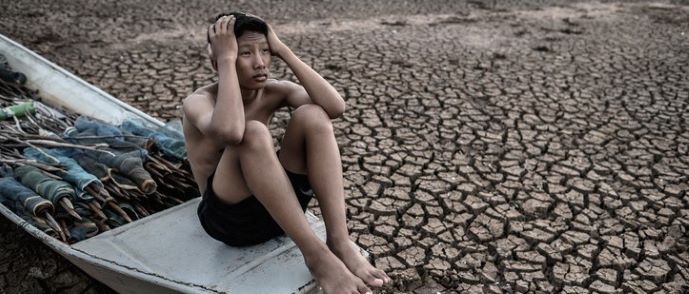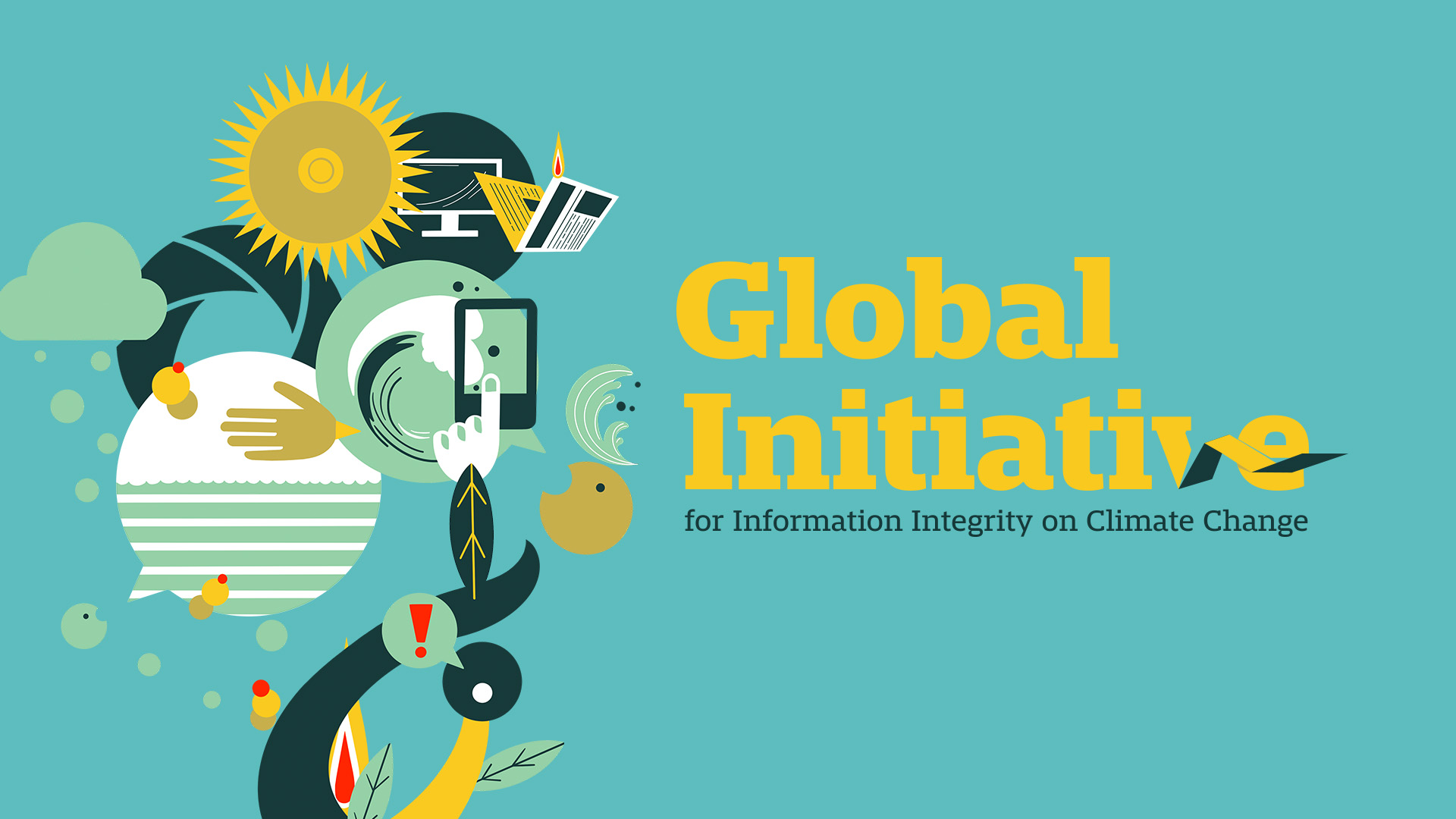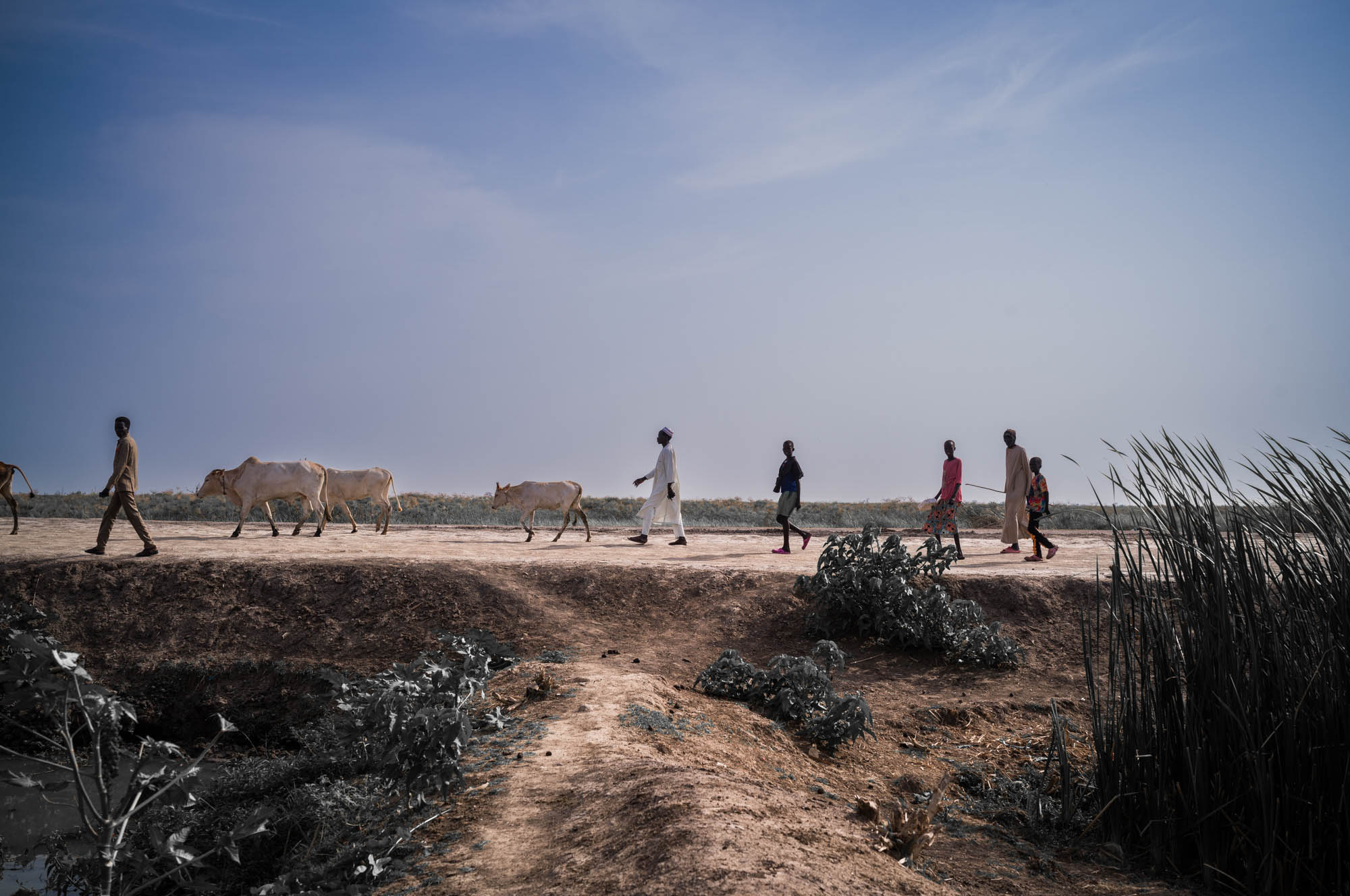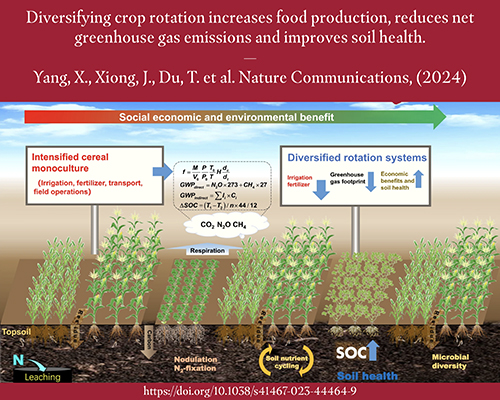Report on Climate-Induced Displacement and its Implications for the Sustainable Development Goals
Introduction
Climate change represents a global emergency that disproportionately impacts vulnerable populations, leading to significant human displacement. This phenomenon directly threatens the achievement of the 2030 Agenda for Sustainable Development. The displacement of people due to climate-related disasters, both sudden and slow-onset, undermines progress across multiple Sustainable Development Goals (SDGs), including those related to poverty, hunger, health, equality, and peace.
The Impact of Climate-Induced Displacement on Sustainable Development
Exacerbating Poverty and Hunger (SDG 1 & SDG 2)
Climate change acts as a threat multiplier, deepening existing inequalities and pushing communities into poverty. The loss of livelihoods is a primary driver of displacement and a significant setback for SDG 1 (No Poverty) and SDG 2 (Zero Hunger).
- Destruction of agricultural land through desertification, flooding, and soil salinization leads to food scarcity and famine, as seen in regions like southern Madagascar.
- Coastal communities reliant on fishing and farming lose their ancestral lands and economic stability due to rising sea levels and storm surges, forcing them to relocate.
- Displaced individuals often move to urban centers with limited social security, increasing the strain on resources and perpetuating cycles of poverty.
Undermining Health, Well-being, and Equality (SDG 3, SDG 5, SDG 10)
The consequences of climate change and subsequent displacement create severe challenges for public health, gender equality, and the reduction of inequalities.
- Health and Well-being (SDG 3): Extreme heatwaves pose direct threats to life, while post-disaster conditions for displaced populations often involve unsanitary living environments, increasing exposure to disease. Access to clean water is compromised by saltwater intrusion and flooding, impacting SDG 6 (Clean Water and Sanitation).
- Gender Equality (SDG 5): Women and girls are disproportionately affected. Pre-existing discrimination means they are more likely to experience poverty and lack political representation, making them more vulnerable during climate crises and displacement.
- Reduced Inequalities (SDG 10): Climate impacts are most severe for marginalized groups, including Indigenous Peoples, racialized communities, older people, children, and persons with disabilities. These groups often live in areas with less resilient infrastructure and lack the resources to adapt or relocate safely.
Drivers of Climate Displacement and the Imperative for Climate Action (SDG 13)
Anthropogenic Causes of Climate Change
The primary drivers of climate change are human activities that release greenhouse gases. Addressing these root causes is fundamental to achieving SDG 13 (Climate Action) and preventing further displacement.
- Fossil fuel extraction, production, and use.
- Harmful agricultural practices and deforestation.
- Changes in land use.
Manifestations of Climate Change
Climate change manifests in various forms, each contributing to displacement and threatening ecosystems, which are central to SDG 14 (Life Below Water) and SDG 15 (Life on Land).
- Sudden-Onset Disasters: Increasingly frequent and intense events like cyclones, wildfires, and floods cause temporary and prolonged displacement, undermining community resilience and progress toward SDG 11 (Sustainable Cities and Communities).
- Slow-Onset Disasters: Gradual environmental degradation, such as rising sea levels, drought, and desertification, renders entire regions uninhabitable over time, forcing permanent migration.
State Responsibility and the Need for Stronger Institutions (SDG 16)
Gaps in Legal Protection
A significant challenge in addressing climate displacement is the lack of a dedicated international legal framework. The term “climate refugee” does not exist in international law, leaving many displaced persons without clear pathways to protection. While the principle of non-refoulement applies, its application in climate-related cases is inconsistent. This legal vacuum undermines SDG 16 (Peace, Justice and Strong Institutions).
State Obligations and Recommendations
States have a legal responsibility under human rights law to mitigate climate change and protect those displaced by its impacts. Current efforts are insufficient, with restrictive migration policies and rare visa programs failing to meet the scale of the crisis.
- Establish Legal Frameworks: States must urgently create national and international legal pathways, such as humanitarian visas and temporary protection statuses, for persons displaced by climate change.
- Accelerate Climate Action: Governments must commit to a rapid and just phase-out of fossil fuels and support a transition to sustainable energy to mitigate the root causes of displacement.
- Support Adaptation and Loss and Damage: Wealthier nations, which bear historical responsibility for emissions, must provide financial and technical support to lower-income countries for adaptation, disaster risk reduction, and compensation for loss and damage.
- Uphold Human Rights: All policies must ensure that the rights of displaced persons are protected, preventing family separation and societal exclusion.
Analysis of Sustainable Development Goals in the Article
1. Which SDGs are addressed or connected to the issues highlighted in the article?
The article on climate change and displacement touches upon a wide range of interconnected global challenges, directly and indirectly referencing several Sustainable Development Goals (SDGs). The following SDGs are most relevant to the issues discussed:
- SDG 1: No Poverty – The article repeatedly emphasizes that people living in poverty are disproportionately affected by climate change, losing homes, livelihoods, and facing increased vulnerability.
- SDG 2: Zero Hunger – The connection is made explicit through the example of a prolonged drought in southern Madagascar leading to a “catastrophic famine,” directly linking climate change to food insecurity.
- SDG 3: Good Health and Well-being – The text highlights the direct health impacts of climate change, such as heatstroke and exhaustion from extreme heat, and the unsanitary living conditions faced by displaced populations, which increase exposure to disease.
- SDG 6: Clean Water and Sanitation – The article mentions how rising sea levels and flooding lead to the contamination of freshwater sources with saltwater, making water undrinkable and impacting sanitation.
- SDG 10: Reduced Inequalities – A central theme is that climate change is a “threat multiplier that deepens inequalities.” It specifies that marginalized groups, including women, Indigenous Peoples, racialized communities, and people with disabilities, are most affected.
- SDG 11: Sustainable Cities and Communities – The article discusses the destruction of homes and infrastructure in coastal communities and the displacement of populations, often towards cities, highlighting the need for resilient infrastructure.
- SDG 13: Climate Action – This is the core SDG addressed. The entire article focuses on the causes (fossil fuels, deforestation), impacts (rising sea levels, extreme weather), and human consequences of climate change, calling for urgent state action.
- SDG 16: Peace, Justice and Strong Institutions – The article discusses the lack of legal protections for “climate refugees,” the responsibility of states under international law, and the potential for conflict over scarce resources, all of which relate to justice and strong institutions.
2. What specific targets under those SDGs can be identified based on the article’s content?
Based on the specific problems and solutions discussed in the article, several SDG targets can be identified:
- Target 1.5: “By 2030, build the resilience of the poor and those in vulnerable situations and reduce their exposure and vulnerability to climate-related extreme events and other economic, social and environmental shocks and disasters.”
- The article’s focus on how climate disasters hit people in poverty and marginalized groups the hardest directly relates to this target of building resilience and reducing vulnerability.
- Target 2.1: “By 2030, end hunger and ensure access by all people, in particular the poor and people in vulnerable situations… to safe, nutritious and sufficient food all year round.”
- The mention of the drought-induced famine in Madagascar directly connects climate impacts to the failure to achieve this target.
- Target 10.7: “Facilitate orderly, safe, regular and responsible migration and mobility of people, including through the implementation of planned and well-managed migration policies.”
- The article’s core argument about the lack of legal pathways, the call for humanitarian visas, and the critique of restrictive migration policies directly address the need for well-managed policies for people displaced by climate change.
- Target 11.5: “By 2030, significantly reduce the number of deaths and the number of people affected and substantially decrease the direct economic losses… caused by disasters… with a focus on protecting the poor and people in vulnerable situations.”
- The article cites figures of millions of people displaced by disasters (e.g., 8 million in Pakistan) and describes the destruction of homes and livelihoods, aligning with the goal of reducing the impact of disasters.
- Target 13.1: “Strengthen resilience and adaptive capacity to climate-related hazards and natural disasters in all countries.”
- The text highlights that low- and middle-income countries lack the resources to adapt to climate change, pointing to the need to strengthen this capacity globally.
- Target 13.2: “Integrate climate change measures into national policies, strategies and planning.”
- The article criticizes government inaction and the failure of many states to phase out fossil fuels, calling for the integration of climate action into national policy as a legal responsibility.
- Target 16.3: “Promote the rule of law at the national and international levels and ensure equal access to justice for all.”
- The discussion on the absence of the term “climate refugee” in international law and the call to establish “clear legal frameworks” for the protection of displaced persons is a direct appeal for strengthening the rule of law in this area.
3. Are there any indicators mentioned or implied in the article that can be used to measure progress towards the identified targets?
The article provides both direct and implied indicators that can be used to measure progress:
- Number of people displaced by disasters: The article explicitly cites data from the International Displacement Monitoring Centre (“9.8 million people are displaced by disaster”) and a specific case (“eight million internally displaced” in Pakistan). This serves as a direct indicator for targets 1.5 and 11.5, measuring the human impact of disasters.
- Number of national legal frameworks or visa programs for climate-displaced persons: The text mentions that “Only some countries offer dedicated protections” and cites Australia’s specific visa program for “up to 280 people a year from Tuvalu.” The existence and number of such policies is a measurable indicator for Target 10.7.
- Rate of fossil fuel phase-out: The article identifies fossil fuel use as a primary cause of climate change and states that a “fossil fuel phase out is imperative.” Therefore, national and global rates of reduction in fossil fuel production and consumption are a key indicator for Target 13.2.
- Amount of climate finance provided by developed countries: The article calls on “richer countries” to provide “financial and technical support” for adaptation and loss and damage. The amount of funding committed and delivered for these purposes is a critical indicator for SDG 13.
- Prevalence of food insecurity in climate-vulnerable regions: The mention of a “catastrophic famine” in Madagascar implies that the prevalence of hunger and food insecurity (Indicator 2.1.1) in regions affected by climate-related disasters like drought is a relevant measure of impact.
4. Summary Table of SDGs, Targets, and Indicators
| SDGs | Targets | Indicators |
|---|---|---|
| SDG 1: No Poverty | 1.5: Build resilience of the poor and reduce their vulnerability to climate-related extreme events and disasters. | Number of people living in poverty affected by climate-related disasters (e.g., flooding, drought). |
| SDG 2: Zero Hunger | 2.1: End hunger and ensure access to safe, nutritious and sufficient food. | Prevalence of famine or catastrophic food insecurity in regions experiencing climate-related events like prolonged drought (e.g., Madagascar). |
| SDG 10: Reduced Inequalities | 10.7: Facilitate orderly, safe, regular and responsible migration and mobility of people. | Number of countries with dedicated legal frameworks, humanitarian visas, or protection policies for people displaced by climate change (e.g., Australia’s visa for Tuvalu citizens). |
| SDG 11: Sustainable Cities and Communities | 11.5: Significantly reduce the number of people affected by disasters. | Number of people internally displaced due to disasters, as cited from the International Displacement Monitoring Centre (e.g., 8 million in Pakistan). |
| SDG 13: Climate Action | 13.2: Integrate climate change measures into national policies, strategies and planning. | National and global rates of phasing out fossil fuels; Amount of financial support provided by richer countries for adaptation and loss/damage. |
| SDG 16: Peace, Justice and Strong Institutions | 16.3: Promote the rule of law at the national and international levels and ensure equal access to justice. | Existence of international and national laws that recognize and protect people displaced across borders due to climate change impacts. |
Source: amnesty.org







